
Social media as a support (or obstacle?) in learning
Nowadays, social media are an integral part of young people’s lives. Data shows that nearly every household in Poland with children (99.7%) has internet access. It is the internet—especially social media—that has become the place where students spend a large part of their day. Platforms such as Instagram, TikTok, or Snapchat serve not only as entertainment but also influence the way young people communicate, build relationships, and perceive themselves and the world around them. For many, social media are a primary source of information. As these platforms grow in importance, questions about their impact on learning arise more frequently.
How much time do students spend on social media?
The amount of time spent online increases with age. Younger children, especially in the early grades of primary school, use the internet relatively little—most of them spend less than two hours a day online. As they move into higher grades, this time increases significantly. Older primary school students already spend several hours a day online, and for high school students, spending many hours on the internet is common. An increasing number of young people spend up to eight hours a day online, indicating a strong link between their daily lives and online activity, including social media use.
-
62% of second graders spend less than 2 hours a day online.
-
Among sixth graders, this percentage drops to 27%, and among high school students—to 11%.
-
55% of sixth graders spend between 1 and 4 hours online daily, while 56% of older students spend between 2 and 6 hours.
-
10% of sixth graders and 16% of high school students use the internet for up to 8 hours a day.
Why do students use social media?
The main reasons include maintaining relationships with peers, both from school and outside of it, which for many young people is the primary function of social media. These platforms are also an important source of daily entertainment—students use them to watch videos, listen to music, browse their favorite content, or chat via messaging apps. At the same time, social media are increasingly fulfilling informational and educational roles—young people look for knowledge, inspiration, and study materials there. In this way, social media combine social, entertainment, and educational functions, becoming an integral part of students’ everyday lives.
-
Staying in touch with school friends (90.6%) and friends outside of school (85.4%).
-
Using social media platforms (78.1%) and messaging apps (68.7%).
-
Listening to music (65.4%) and watching movies/TV shows (62.1%).
-
Searching for information and developing interests (41.8%).
-
Doing homework and supporting learning (36.9%).





How Do Students Learn Through the Internet?
More and more students are using the internet—including social media—not just for entertainment, but also as an educational tool. Video platforms have become a source of knowledge for them—they watch lessons, reviews, experiments, and explanations of difficult topics. On social media, students create virtual support groups, share materials, and solve tasks together. They are also increasingly turning to educational apps and specialized online platforms that support language learning, school subjects, and the development of personal interests. Many students follow the profiles of educators and teachers who publish content in an accessible and engaging way. As a result, learning becomes more accessible, flexible, and tailored to individual needs.
-
YouTube is used to watch educational videos, lessons, experiments, and exam reviews.
-
Facebook groups and messaging apps help students exchange notes, homework, and even study together.
-
Students use educational apps and e-learning platforms, such as digital textbooks, Quizlet, Khan Academy, and the Integrated Educational Platform.
-
On social media, students follow educational profiles of teachers, tutors, and science enthusiasts, which helps them learn in a more modern and engaging way.
How Can Schools and Parents Support Students?
In the face of the growing presence of the internet in young people’s lives, it is important to:
-
Educate students about responsible use of the internet and social media.
-
Promote smart use of the internet for learning and developing passions.
-
Encourage balance between online and offline life—e.g., through sports, extracurricular activities, or in-person contact with peers.
-
Cooperate with parents to monitor online time and support children in developing healthy digital habits.
Students’ Voices – What Do They Say?
Sometimes it’s worth going directly to the source and asking students themselves how they use the internet in the context of learning. Among 28 students who participated in a short survey conducted by the authors of this material, as many as 25 students (89%) declared that they regularly use the internet as a learning aid. At the same time, all of them—100% of respondents—admitted that the internet distracts them while studying. They pointed to notifications, the easy availability of messaging apps, and the habit of frequently checking whether someone had sent a message.
Social Media – Opportunity or Threat?
Social media can be a valuable tool to support education—they offer quick access to knowledge, enable information exchange, and inspire learning and the development of interests. Thanks to them, students can acquire knowledge in a convenient and often engaging form—through videos, infographics, podcasts, or interactive quizzes. It’s worth emphasizing that digital education opens doors to materials from around the world, develops digital competencies, and teaches independence.
On the other hand, an overload of stimuli, easy access to entertainment, and constant notifications make it difficult to concentrate on learning. Students often admit that studying with a connected device requires a great deal of self-discipline. Spending too much time online can lead to fatigue, distraction, and even decreased motivation. That’s why balance is so important—the ability to use technology as a support, not a barrier, in the learning process.
Do platforms like YouTube, TikTok, and Instagram help with learning, or do they rather distract?
In the digital age, social media have become an integral part of young people’s lives, influencing not only their social relationships but also educational processes. In Poland and Greece, as in many other countries, young people use platforms such as YouTube, TikTok, and Instagram both for entertainment and educational purposes.
Social Media as an Educational Tool
Social media have revolutionized the way people communicate, share knowledge, and collaborate. Increasingly, they are also used as educational tools—both in formal education systems and informal learning. In Poland and Greece, there is growing interest in using platforms like Facebook, YouTube, Instagram, as well as TikTok and Twitter for educational purposes; however, the manner and extent of their use differ between the two countries.
Poland
In Poland, young people are increasingly using the internet for educational purposes. According to the report “Teenagers 3.0,” 79.7% of teenagers regularly use the internet to do homework, 64.8% to expand their school knowledge, and 45.7% to prepare for tests. The most frequently used sources are Wikipedia, Google, YouTube, Ściąga.pl, and Bryk.pl. YouTube has become especially popular as an educational platform, offering a wide range of video materials that help students understand difficult topics. Meanwhile, TikTok, originally created as an entertainment platform, increasingly features educational content presented in short and accessible formats.
Greece
The situation in Greece is somewhat different. Although young people actively use social media, their use for educational purposes is less common. The ICILS 2023 study showed that Greek students score significantly below the global average in digital skills. Among 31 countries, Greece ranks only 23rd with an average score of 460 points, below the European average of 476 points. Deficiencies in school infrastructure and limited digital competencies among teachers pose barriers to the effective use of social media in education.

Social Media as a Source of Distraction

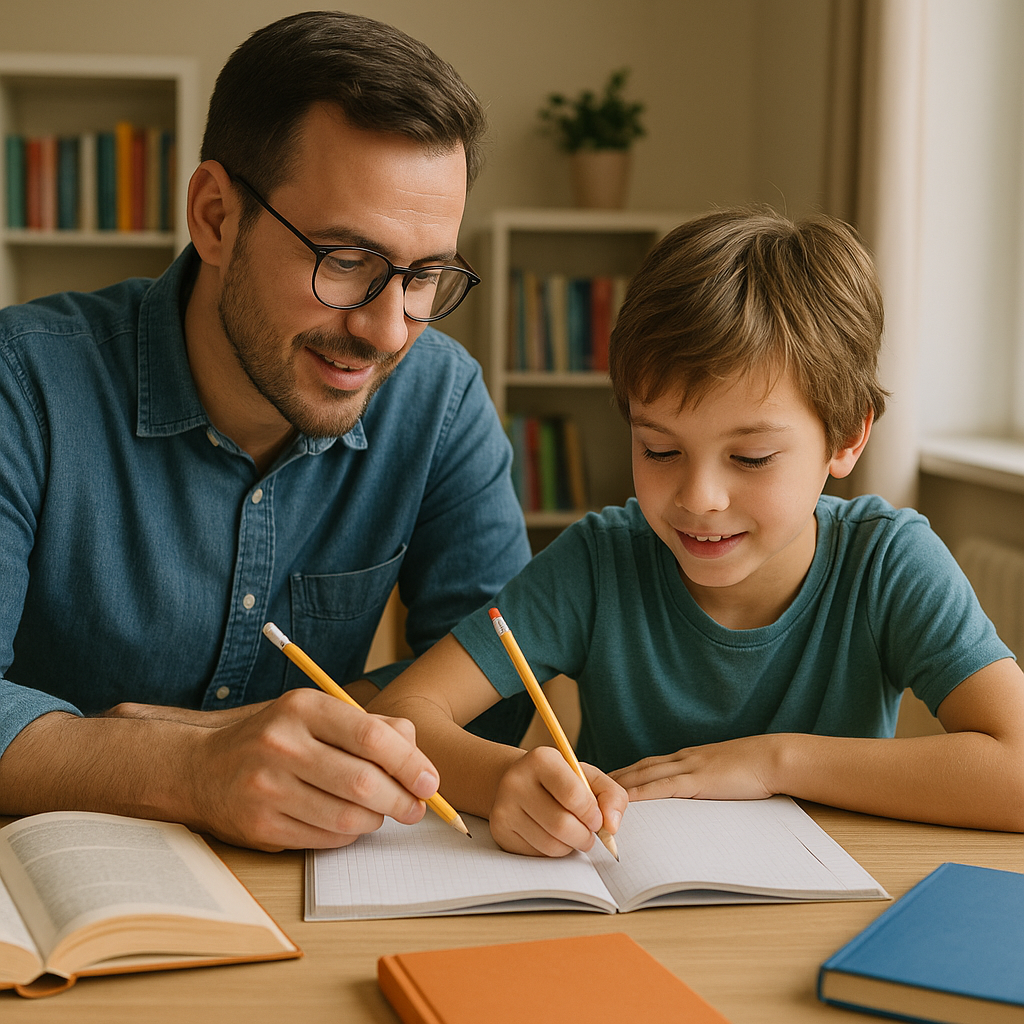
Social media are increasingly entering the educational process. Research on this topic is conducted both in Poland and across Europe. According to Polish analyses carried out by the company Librus, among 160 educators who use computers in their work with students, 91% use social media, and nearly 83% incorporate them in lessons. The most popular platform among them was YouTube, which 71% of teachers use privately, and more than half (58%) use it in education. Nearly 62% of teachers had a Facebook account, and 18% indicated its educational use. Eighty-seven percent used social media to search for information they later used during lessons, and almost half (43%) recommended interesting content on blogs and websites to students that they believed would help develop interests and be useful for learning.
A well-researched area of social media’s impact on education is their usefulness in learning foreign languages. According to McBride, the key to success in foreign language teaching is user engagement in communication, willingness to express oneself, and to create and maintain interpersonal relationships. All this can be achieved by utilizing the opportunities offered by social media. Trust and a sense of belonging that arise in virtual communities also play an important role. This facilitates sharing content and overcoming inhibitions when publicly presenting materials, especially those created in a foreign language. The educational potential of social media in foreign language learning was the starting point for the project “Foreign Languages and Social Media – 6 Key Dialogues,” which involved fourteen European institutions and organizations, including the Higher School of Linguistics in Częstochowa and SWPS University in Warsaw, over a three-year period (2010–2013). The study participants were exclusively university students, some of whom were both learners and teachers of foreign languages.
Poland
Although social media offer many educational opportunities, they can also be a source of distraction. According to the report “Teenagers 3.0,” the average time a teenager spends on social media is 4 hours and 12 minutes daily, with girls spending on average 57 minutes longer on social networks than boys. Moreover, nearly one in three teenagers checks social media immediately after waking up, and 14% declare spending 4 to 6 hours daily on this activity. Such intensity of social media use can negatively affect concentration and learning efficiency.
Greece
In Greece, despite lower levels of digital skills, young people also use social media intensively. However, a lack of data on the exact time spent on these platforms makes it difficult to assess their impact on educational processes. Nevertheless, limited digital competencies may cause young people to struggle to effectively separate educational content from entertainment, which can lead to distraction.
Social Media as a Source of Distraction
Information technologies have become an integral part of family and school life. They accompany family members every day, filling their free time as well as the time for various extracurricular activities. In the school environment, media have become an inseparable element of education. According to Bogusław Śliwerski, new technologies bring new solutions—with a higher level of innovation—supporting the fulfillment of children’s individual needs, improving their well-being, promoting a better quality of life, and enhancing their conditions for learning and development. The result is better conditions in the teaching-learning system, including educational aids that support improving educational and developmental opportunities for children.
Media and multimedia are neither inherently good nor bad; their value depends on how the educational and upbringing potential embedded in the media is utilized at home and at school, and with what effect for the child. The course and effectiveness of this process largely depend on parents and teachers, who are responsible for the rational use of media by children.
In a media-dominated world, it becomes essential to care about acquiring media competencies among children and youth, the most frequent media users. The primary environments responsible for acquiring these competencies are the family environment and the school environment. For this reason, adult education and learning aimed at making them more aware of their fundamental role as introducers and preparers of children to use modern communication tools seems a newly important goal of media education in both countries.
Parents and teachers play a key role in shaping habits of social media use. In Poland, studies show that parents significantly underestimate the time young people spend on social media—indicating almost 3 hours less than what teenagers themselves report. In Greece, although students demonstrate limited digital skills, 84% declare awareness of responsible social media use, and 82% are aware of the risks related to cyberbullying. This shows that education regarding digital safety is present, though it may not be sufficiently developed.
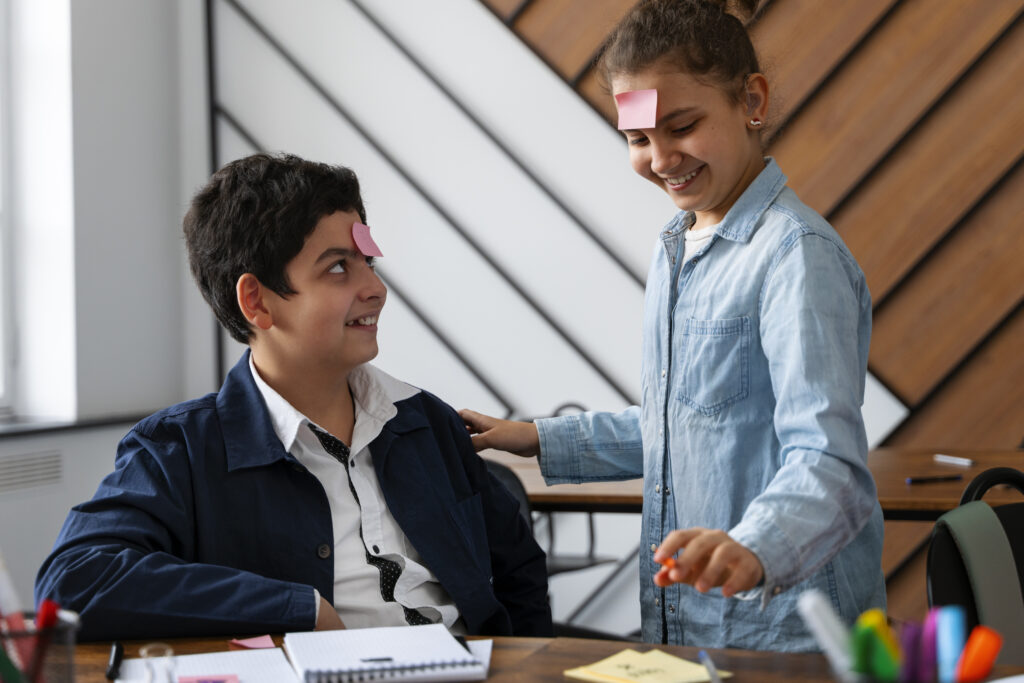
Conclusions and Recommendations

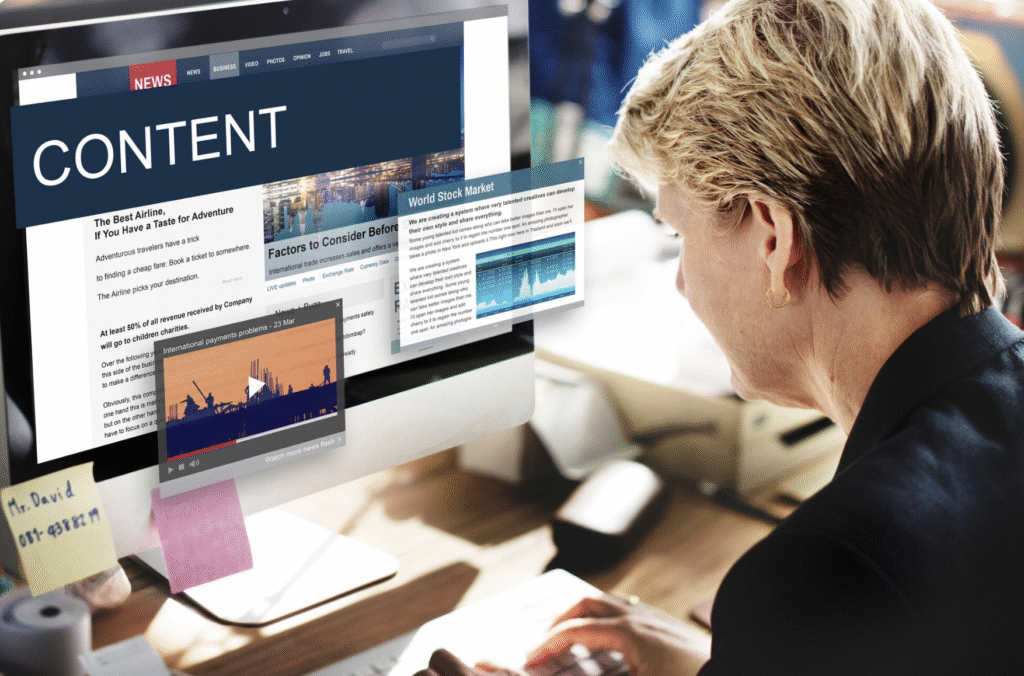
Conclusions
Ambiguous Role of Social Media
Social media by nature promote short, intense, and highly simplified content. Platforms like TikTok, Instagram Reels, or YouTube Shorts rely on videos lasting just a few seconds designed to grab attention instantly and deliver quick, often entertaining information. For young people accustomed to fast scrolling and a constant influx of stimuli, this becomes a natural way of absorbing knowledge. Short formats can be helpful in reinforcing simple definitions, mathematical formulas, or historical facts—content that can be condensed and quickly conveyed. However, problems arise when dealing with more complex topics requiring deeper analysis, reflection, or context. In such cases, superficial “learning” from a video may create a false sense of understanding. A student might think they have mastered something because they watched a popular video with hundreds of thousands of views, but in reality, they cannot apply this knowledge in practice, solve a problem, or connect the topic with other concepts. This phenomenon worsens when social media replace other forms of learning—such as reading longer texts, analyzing sources, independently seeking answers, or discussing with teachers. Young people increasingly avoid difficult topics because these do not have attractive, quick online versions and require effort and focus. Moreover, constant consumption of simplified content can weaken logical thinking skills and the ability to build elaborate written or oral statements. In the long term, this may result in youth knowing many terms but unable to deepen, compare, relate, or critically assess them. Education ceases to be a process of discovery and becomes consumption of information—often fragmented and taken out of context.
Short Formats vs. Complex Knowledge
Alongside the impact of content format, negative psychological effects of frequent social media use also develop. One of these is FOMO (Fear of Missing Out)—the anxiety that something important is being missed. Students feel that if they are not up-to-date with trends, news, and peers’ online lives, they are missing out. This feeling drives a spiral of constant notification checking, app switching, and compulsive scrolling—obviously distracting and hindering focus on learning. Additionally, there is pressure to compare oneself with others, especially strong in adolescence. Students compare their lives, achievements, and appearance with idealized images shown by influencers and classmates. This can lead to feelings of low self-worth, perfectionism, lack of motivation (“others are just better”), and fear of failure. Consequently, some youth start avoiding educational challenges for fear of not meeting expectations—either their own or social ones. Excessive emphasis on self-presentation in social media also makes young people learn “for show”—to gain likes, recognition, or prove something to others—rather than from an internal desire to grow. This disrupts natural motivation and can lead to educational burnout.
Recommendations
Media Education and Digital Self-Control
Media education and digital self-control are becoming essential elements of young people’s education today. Students should understand that social media algorithms are not neutral—their goal is to maximize user engagement, often at the expense of attention and mental well-being. Therefore, schools and universities should implement programs teaching critical thinking about online content, conscious media use, and recognizing manipulation and misinformation. These classes should also cover time management online, building healthy digital habits, and strategies to prevent screen addiction. Supporting young people in developing digital self-control can foster greater autonomy and psychological resilience in an information-overloaded world.
Creating Controlled Educational Environments
Creating controlled educational environments is a response to the growing need for focus and quality knowledge acquisition in an age of digital distractions. It is worth investing in educational apps and platforms that use positive aspects of social interaction—collaboration, sharing materials, mutual motivation—but eliminate elements that excessively capture attention, such as like systems, push notifications, or algorithms promoting content based on popularity rather than educational value. Such environments should be designed with user well-being and long-term development in mind, not momentary engagement. This allows students to better focus on learning, build internal motivation, and develop habits conducive to deep learning rather than superficial information consumption.
Selective Use of Social Media in Learning
Selective use of social media for educational purposes requires conscious approaches and critical thinking. Users should learn to distinguish valuable, substantive content from attention-grabbing but non-educational material. Creating separate accounts or curated lists focused solely on educational topics—e.g., scientific channels, teacher profiles, experts, or educational institutions—can help limit distracting stimuli, foster concentration, and facilitate systematic knowledge acquisition. Moreover, selective use of online content teaches digital responsibility and supports the development of habits useful not only in education but also in professional life.
Promoting Educational and Popular Science Creators
Promoting educational creators and popularizers of science is key to building a learning culture based on curiosity, reliability, and accessibility of knowledge. Educational institutions, public media, and digital platforms should actively support authors who communicate complex topics attractively without sacrificing quality and credibility. Well-prepared popular science materials can inspire young people to independently explore topics that once seemed difficult or inaccessible. Furthermore, the presence of such creators in the digital space can counterbalance entertainment content often lacking educational value. Popularizing science via social media also helps reduce the gap between academia and everyday experience, making education more inclusive and engaging.
Offline Time as a Foundation for Effective Learning
Offline time today is not just a need but a foundation for effective learning and healthy cognitive functioning. Constant stimuli from social media break attention, reduce concentration, and make it harder to retain new information. Thus, promoting mindful disconnection practices—like the Pomodoro technique, which involves working in short, intense blocks with regular breaks, or using apps that block distracting sites—is valuable. Introducing a “digital detox”—even one day per week free of social media—can significantly improve mental rest quality and foster reflection. Offline time is a space for deep thinking, knowledge processing, and creativity development—indispensable in real learning rather than passive content consumption.
Role of Parents and Teachers
The role of parents and teachers in shaping healthy digital habits among children and youth is invaluable. Adults should not only supervise social media use but also set examples of responsible and conscious technology use. Teachers, by using social media in communication with students, can demonstrate its positive potential—as tools for collaboration, knowledge exchange, and building educational communities. Simultaneously, they must teach youth to evaluate information credibility, recognize manipulation, and build resistance to misinformation. In both Poland and Greece, the growing presence of digital media in students’ lives calls for in-depth research on its impact on education, mental health, and social development. Systematic actions are also needed to effectively integrate new technologies into learning while protecting young people from harmful effects.



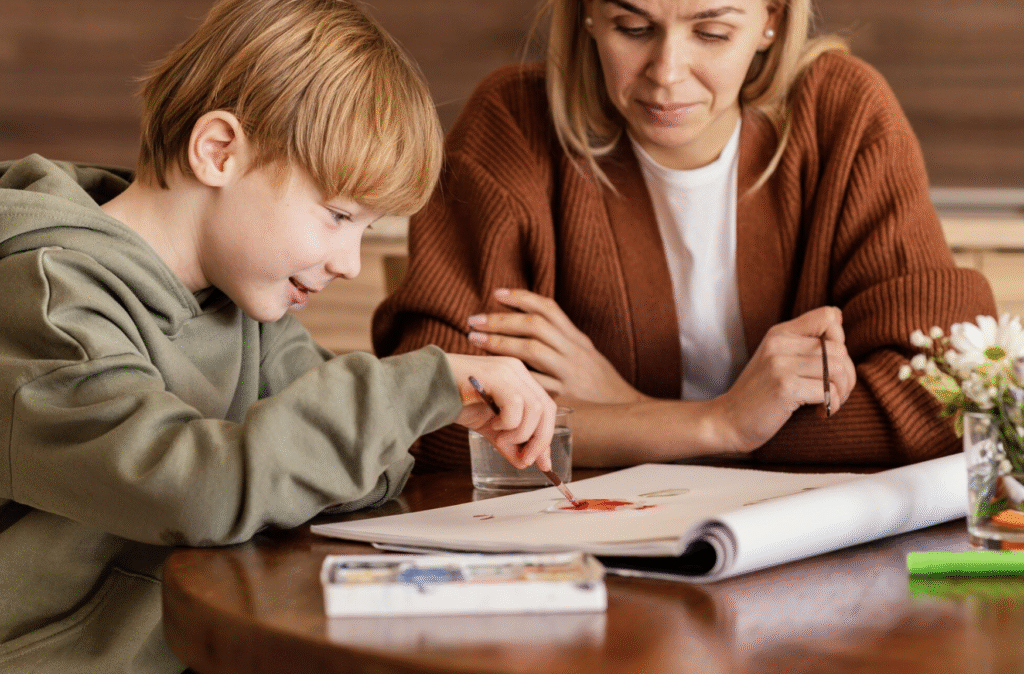
Good Practices and Real Threats to Concentration and the Quality of Acquired Knowledge
Social media has become an inseparable part of everyday life, especially for teenagers and young adults. Its presence in both educational and personal spheres makes it essential to closely examine the impact it has on our ability to concentrate and the quality of the knowledge we absorb. In the context of platforms like TikTok, YouTube, and Instagram, one can point to both the positive aspects of their use and a range of serious cognitive and emotional risks.
Potential Threats
Information Overload and Distracted Attention
One of the most serious issues related to intensive use of social media is information overload. Platforms such as TikTok or Instagram are based on the model of an infinite stream of content — the so-called infinite scroll — which makes it difficult for users to naturally stop consuming content. As a result, the brain is constantly bombarded with new stimuli. As noted by Professor Maryanne Wolf, a neuroscientist at Stanford University, the excess of fast, shallow information reduces our ability to think deeply and reflectively.
This phenomenon is also confirmed by studies included in the NASK report “Teenagers 3.0. The Digital World of Youth” (2021), in which as many as 85.6% of respondents reported daily use of social media, and 30.2% admitted to browsing without a specific purpose. This points to the potential risk of developing habits based on automation and lack of reflection when using digital content.
Shortened Attention Span
Data from recent analyses shows that the average attention span has significantly decreased. In 2004, the average user could focus on a single task for about 150 seconds; today — as indicated by Professor Gloria Mark from the University of California — it is only 47 seconds (source: Wprost, 2023). This is partly due to constant switching between apps, notifications, and content, which encourages a superficial learning style.
TikTok, with its format of ultra-short videos (15–60 seconds), significantly contributes to reinforcing the habit of rapid information processing. This consumption model makes it difficult to focus on tasks that require long-term attention — such as academic study, reading scientific texts, or analyzing complex problems.
Addiction to Gratification and Dopamine
Social media platforms are designed to provide instant rewards in the form of likes, comments, and shares. These mechanisms activate the brain’s reward system, leading to the release of dopamine — a chemical responsible for feelings of pleasure. Regular exposure to such gratification may result in addiction to short-term stimuli and simultaneously weaken the ability to engage in longer and more cognitively demanding activities.
According to an analysis by the Łukasiewicz – PIT Institute (2023), the long-term dopamine effect associated with social media can lead to, among other things, decreased motivation to study, reduced ability to delay gratification, and disruptions in the self-regulation system.
Memory Disruption and Knowledge Consolidation
Another significant issue is the impact of social media on memory processes. Consuming content right after studying — especially in the evening — can disrupt memory consolidation. Studies show that individuals who used social media after a study session performed significantly worse on knowledge tests compared to those who rested without screen exposure (source: Grinday, 2022).
This mechanism is explained by the competition for attentional and cognitive resources — processing new information after studying may “overwrite” freshly remembered material before it is effectively stored in long-term memory.
Decline in Self-Esteem and Emotional Problems
Using social media can also trigger emotional problems that indirectly affect concentration. Constant comparisons to idealized images online can lead to lowered self-esteem, frustration, and even depression. According to a 2022 report by S7Health, young people who spend more than 3 hours a day on Instagram or TikTok more often report issues with motivation and concentration in their studies.
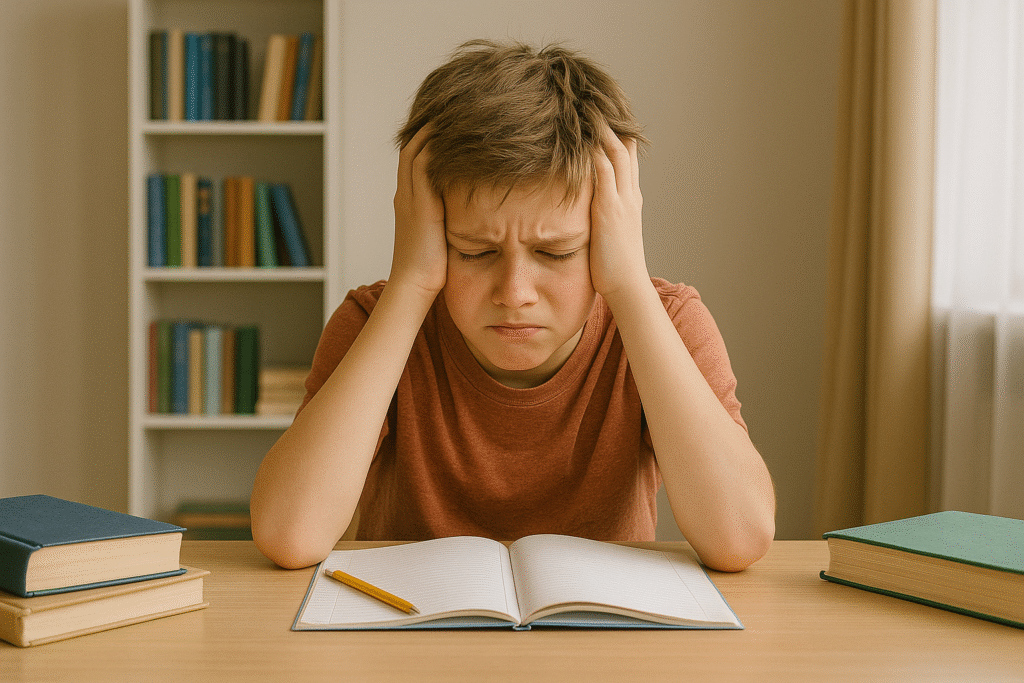

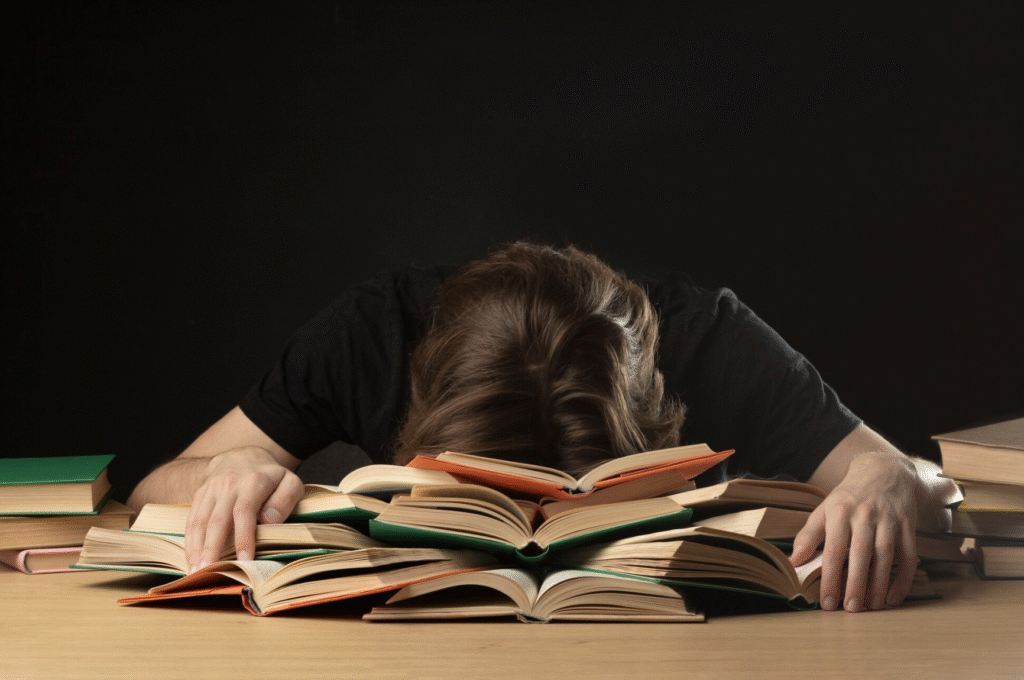
Good Practices and Recommendations
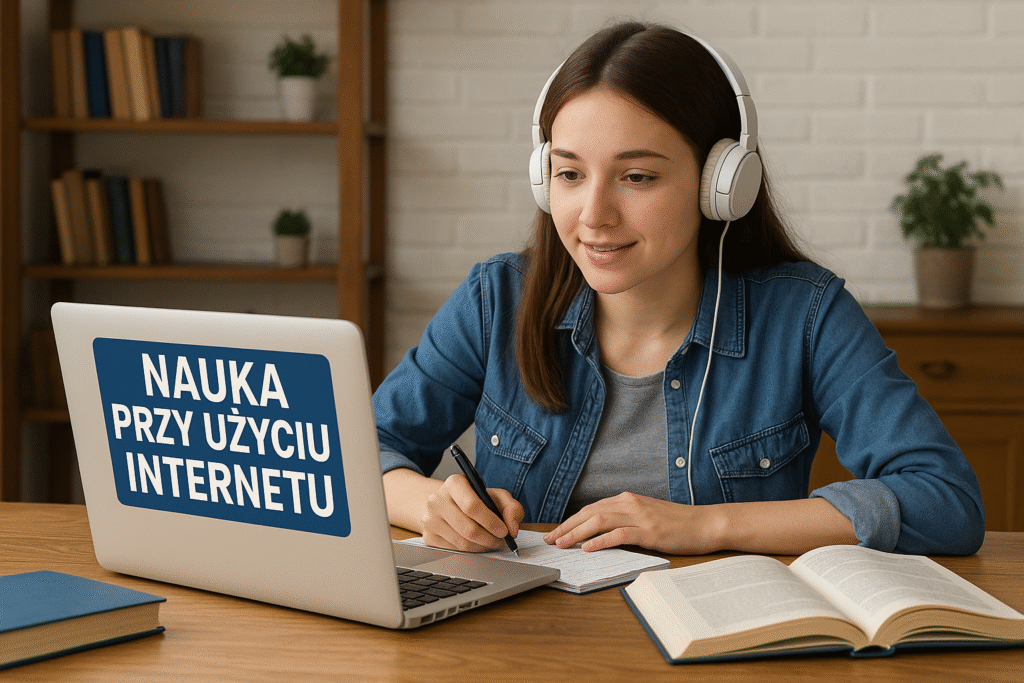
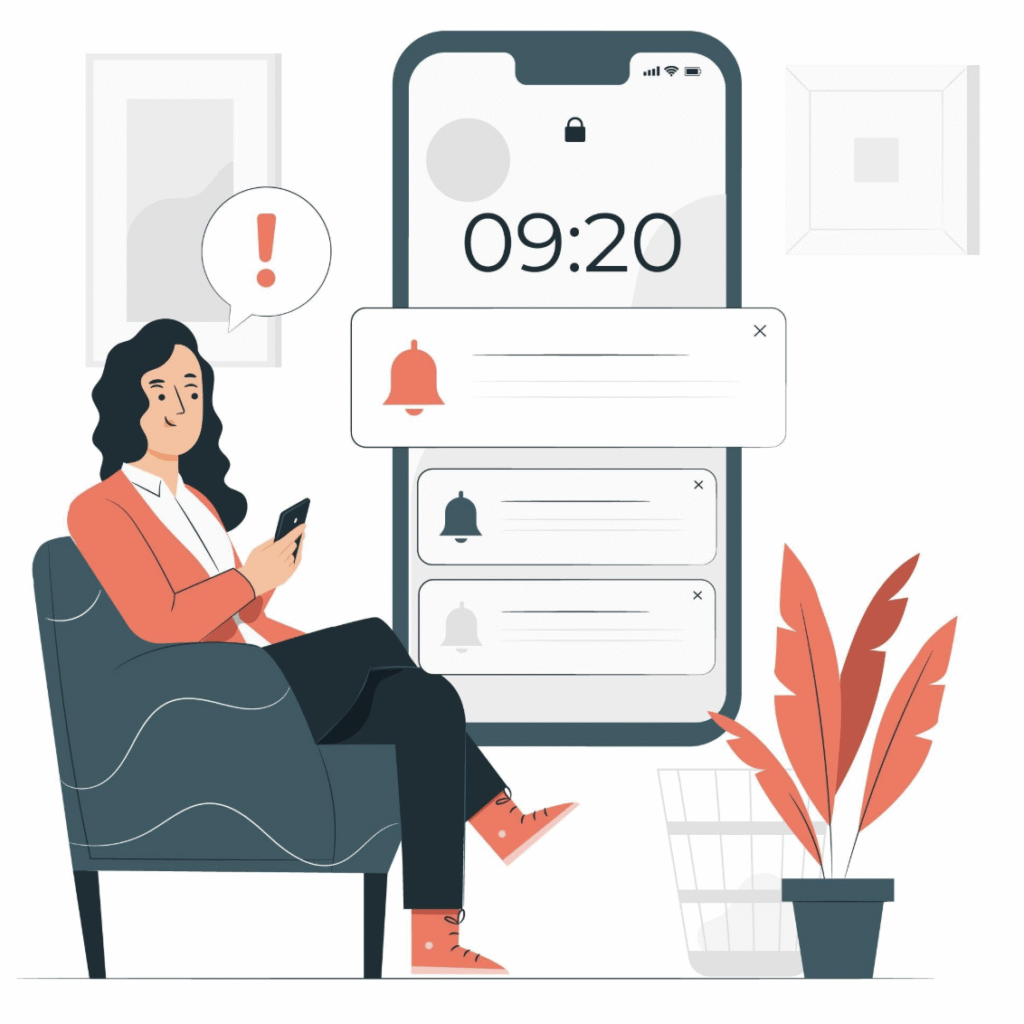

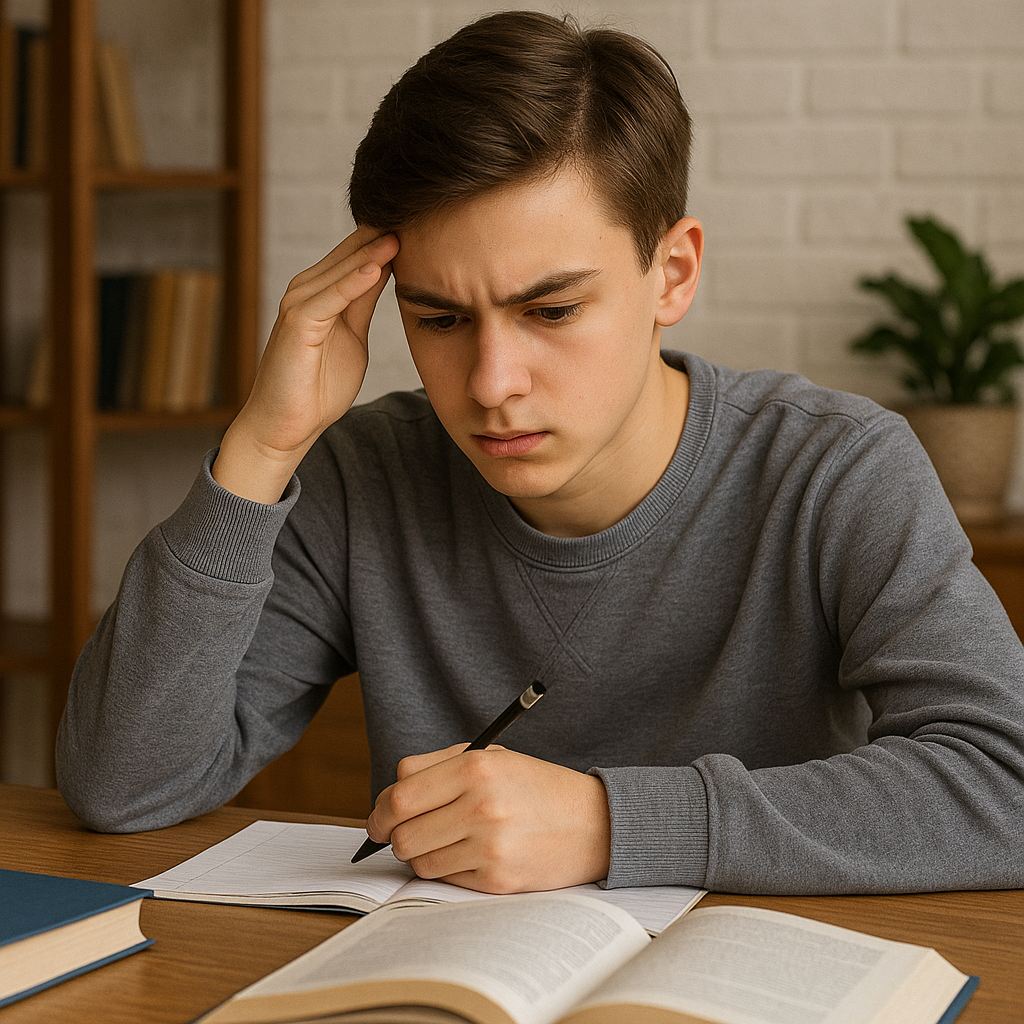
Despite numerous risks, social media does not have to be solely an obstacle to learning and development. When used properly, it can become a valuable tool for supporting knowledge acquisition, sparking inspiration, and broadening horizons. However, this requires a conscious approach and the implementation of good practices.
Limiting Screen Time
Limiting screen time is a key component of maintaining mental health, focus, and a balance between study and rest. Setting a daily limit on social media usage — especially on school days — helps young people better manage their time and avoid information overload. Experts often recommend no more than 60 minutes per day, which allows for more mindful and purposeful use of these platforms instead of mindless scrolling. Apps such as Forest (which rewards focus with virtual trees), Digital Wellbeing on Android, and Screen Time on iOS support the development of this habit by monitoring activity, setting limits, and blocking apps once those limits are exceeded. Regular use of such tools helps build self-discipline and regain control over one’s time, which directly translates into better academic performance and an improved quality of life.
Disabling Notifications
Disabling notifications is a simple yet highly effective strategy for improving concentration and learning efficiency. Every ping, message, or alert from a social media app interrupts the work rhythm and forces the brain to re-enter a focused state each time, significantly lowering the quality of information absorption. In his book Deep Work, Cal Newport emphasizes that achieving deep, uninterrupted focus is crucial for completing intellectually demanding tasks — and constant notifications make this nearly impossible. Therefore, it’s beneficial to enable “Do Not Disturb” mode or disable notifications from less important apps, especially during study hours, work time, or before bed, when the brain should be winding down. This practice supports not only better focus but also improved sleep quality and overall mental well-being.
Selective and Conscious Content Consumption
Selectivity and conscious content consumption are the foundations of responsible social media use, particularly in the educational context. In an age of information overload, it’s crucial for users to learn to choose valuable content that expands their knowledge, curiosity, and critical thinking. Following reliable and credible creators — such as “Nauka. To Lubię” or “Uwaga! Naukowy Bełkot” — not only broadens one’s perspective but also fosters healthy information habits. On the other hand, it’s important to avoid accounts that promote misinformation, clickbait headlines, or harmful behavioral patterns, as these distort perception of reality and can reinforce false beliefs. Mindful management of what we watch and read helps not only with more effective learning but also with protecting mental health and developing a more balanced relationship with the digital world.
Introducing Digital Breaks
Introducing digital breaks — consciously disconnecting from social media for a set amount of time — is an effective method for refreshing the mind and improving overall well-being. A digital detox helps reduce stress levels, combats information overload, and allows users to regain control over their time and attention. Regular, even short, periods without social media promote better sleep quality and allow for deeper engagement in other activities such as reading, conversations, or pursuing hobbies. Even dedicating one day a week to being entirely offline can yield noticeable benefits, such as increased learning efficiency and a better mood. Over time, these practices encourage healthy digital habits and help establish balance between online and offline life.
Concentration-Boosting Techniques
Concentration-boosting techniques play a key role in effective learning and intellectual work. One popular method is the Pomodoro Technique, which involves dividing work time into short, focused sessions — usually 25 minutes — followed by 5-minute breaks. This rhythm helps prevent fatigue and maintain high efficiency over longer periods. Equally important are mindfulness exercises, which help reduce stress, improve awareness of one’s thoughts and emotions, and strengthen the ability to focus on tasks. Physical activity also plays a vital role — regular movement not only enhances overall health but also stimulates brain function, boosting its performance and concentration capacity. Incorporating these techniques into a daily routine supports the development of self-discipline, better time management, and sustained motivation, all of which lead to improved educational outcomes and well-being.
Conclusion
Social media is a tool — and its impact depends on how it is used. On one hand, it can be highly distracting, addictive, and detrimental to concentration and memory. On the other, it can serve as a source of knowledge, inspiration, and growth. The key to its positive influence lies in using it consciously, critically, and responsibly.
Based on research, including the NASK report “Teenagers 3.0”, as well as available psychological and neurobiological analyses, it is clear that the goal should not be to completely eliminate social media from our lives, but rather to learn how to live with it wisely.
Summary
Social media platforms, such as Facebook, Instagram, TikTok, and YouTube, have become an integral part of young people’s lives in both Poland and Greece. Their role in students’ daily routines extends far beyond entertainment — they are increasingly influencing the educational process, both positively and negatively.
It is therefore worth comparing these influences in the context of two different countries — Poland and Greece — which, despite having distinct cultures and education systems, face similar challenges. On one hand, social media holds enormous educational potential. In both Poland and Greece, students use these platforms as tools for expanding their knowledge, exchanging information, and communicating with peers and teachers.
Examples include student groups on Facebook, educational YouTube channels, and teachers’ profiles on TikTok, which explain complex topics in subjects like mathematics, biology, or history in an accessible way. These tools enable learning outside the traditional classroom, anytime and anywhere, making education more flexible and tailored to students’ needs. In both countries, the popularity of so-called microlearning — the acquisition of knowledge in short, dynamic formats — is growing among young people. Students are eager to engage with short video content, often just a few seconds long, that concisely presents key concepts. This form of learning can be highly effective, particularly for those with shorter attention spans.
However, shortened attention spans are also becoming one of the main downsides of intensive social media use. In both Poland and Greece, teachers and educators are noticing a decline in students’ ability to concentrate, which is directly linked to frequent app switching, constant notifications, and rapid visual stimuli. Students struggle to focus on a single task for extended periods, which negatively affects their academic performance and the quality of information they retain. This issue is particularly noticeable during remote classes or homework, when access to social media is immediate and the temptation to get distracted is overwhelming.
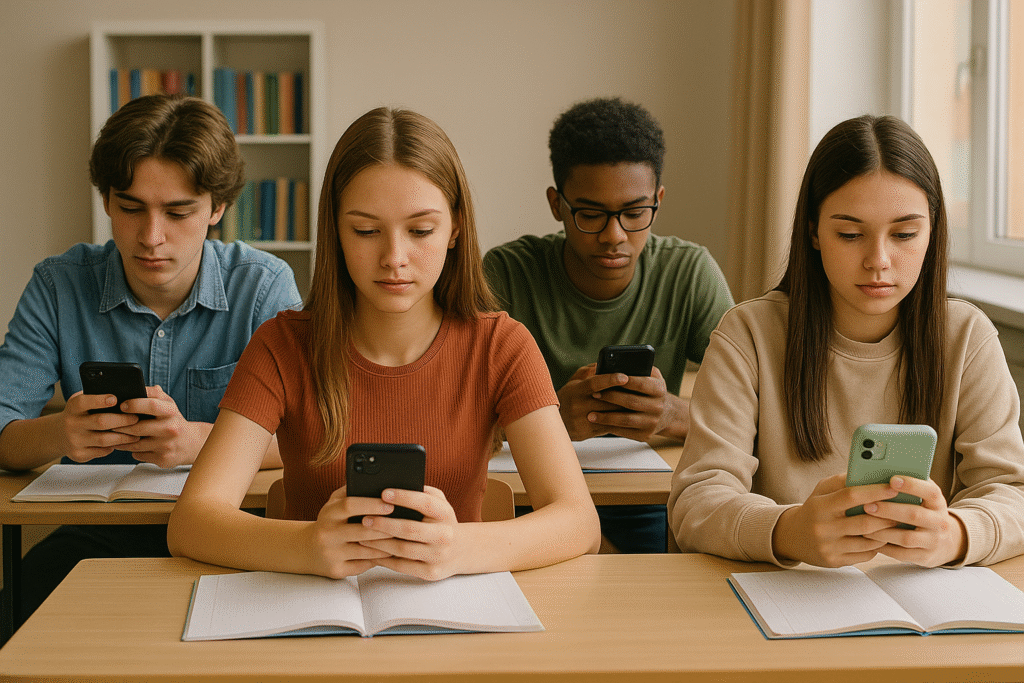



Moreover, numerous studies conducted in both Poland and Greece indicate a growing problem of social media addiction. Young people are spending more and more hours each day browsing content — often at the expense of studying, sleeping, or engaging in physical activity. This phenomenon can lead to lower self-esteem, social anxiety, and even depression — all of which directly impact the ability to learn effectively.
It is also important to highlight cultural and systemic differences. In Greece, relationships between teachers and students are often more formal, and the education system is more centralized, which may contribute to less integration of modern educational tools in schools.
In contrast, in Poland, especially after the COVID-19 pandemic, there has been a noticeable openness to integrating social media with education. Many teachers run educational channels, and students eagerly participate in interactive forms of learning. Social factors also play a role — in Greece, particularly in rural areas, access to modern technology is sometimes limited, leading to educational inequality. This issue exists in Poland as well, but the development of digital infrastructure in recent years has significantly improved the situation.
Both countries also face digital exclusion among students from lower-income families who may not be able to afford modern devices or fast internet. Educational and preventive campaigns play an important role in shaping young people’s relationship with social media. In Poland, initiatives such as “Cyfrowobezpieczni” (“Digitally Safe”) and “Akademia NASK” teach children and teenagers how to use the internet safely and consciously. Similar efforts exist in Greece, although they are often less developed and mainly concentrated in larger cities. A shared challenge in both countries remains the digital education of teachers, many of whom are not sufficiently prepared to work with students in tech-saturated environments.
In conclusion, social media represents both an opportunity and a threat to youth education in Poland and Greece. On the one hand, it can support learning, motivate students, and help develop new competencies. On the other hand, it can distract, lead to addiction, and negatively impact academic performance. The key lies in finding the right balance and developing digital competencies among both students and teachers. Only then can social media serve as a genuine educational tool, rather than an obstacle — in both Poland and Greece.
About the autors

We are a group of high school students from ZSCKP in Sochaczew, Poland. Our team consists of six members: Julka, Maja, Nina, Filip, Dawid, and Adam. We are carrying out this project as part of the Erasmus+ program titled “Social Media in Poland and Greece – Their Impact on Interpersonal Relationships”. Thanks to this initiative, we have the opportunity to travel to Greece and collaborate with the local community.
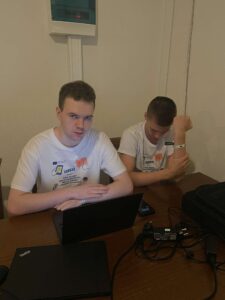
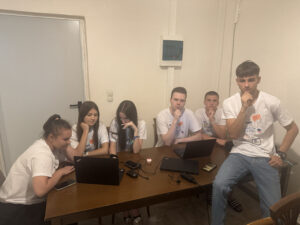
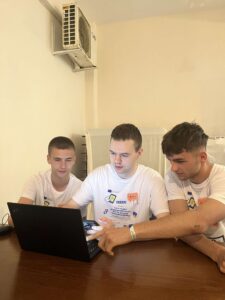
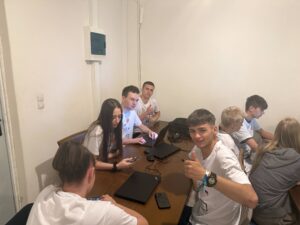
The project is financed by the European Union. The opinions and views expressed are solely the personal views of the authors and do not necessarily reflect the position of the European Union or the entity granting support. The European Union and the grantor are not responsible for them.